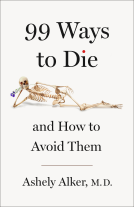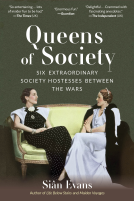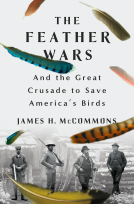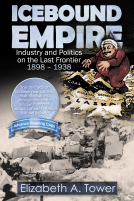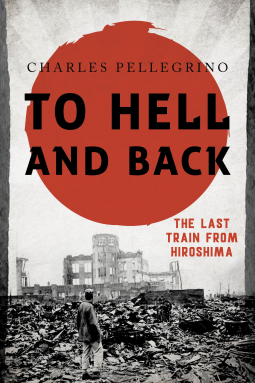
To Hell and Back
The Last Train from Hiroshima
by Charles Pellegrino
This title was previously available on NetGalley and is now archived.
Send NetGalley books directly to your Kindle or Kindle app
1
To read on a Kindle or Kindle app, please add kindle@netgalley.com as an approved email address to receive files in your Amazon account. Click here for step-by-step instructions.
2
Also find your Kindle email address within your Amazon account, and enter it here.
Pub Date Aug 04 2015 | Archive Date Aug 14 2015
Rowman & Littlefield | Rowman & Littlefield Trade
Description
To Hell and Back offers readers a stunning, “you are there” time capsule, wrapped in elegant prose. Charles Pellegrino’s scientific authority and close relationship with the A-bomb survivors make his account the most gripping and authoritative ever written.
At the narrative’s core are eyewitness accounts of those who experienced the atomic explosions firsthand—the Japanese civilians on the ground. Thirty people are known to have fled Hiroshima for Nagasaki—where they arrived just in time to survive the second bomb. One of them, Tsutomu Yamaguchi, is the only person who experienced the full effects of the cataclysm within Ground Zero, both times. The second time, the blast effects were diverted around the stairwell behind which Yamaguchi's office conference was convened—placing him and a few others in a shock cocoon that offered protection, while the entire building disappeared around them.
Pellegrino weaves spellbinding stories together within an illustrated narrative that challenges the “official report,” showing exactly what happened in Hiroshima and Nagasaki—and why.
Charles Pellegrino is the author of twenty books, including the New York Times bestseller Her Name, Titanic and Ghosts of the Titanic, which James Cameron used as sources for his movie Titanic and his Imax film Ghosts of the Abyss. Pellegrino has contributed articles to many scientific journals based on his work in paleobiology, nuclear propulsion systems for space exploration, and forensic archaeology at sites ranging from Pompeii and the Titanic to the World Trade Center. He served as a scientific consultant on James Cameron’s Titanic expeditions and his film Avatar. He is best known as the scientist whose “dinosaur biomorph recipe” became the scientific basis for the Jurassic Park series. He lives in New York City.
A Note From the Publisher
Advance Praise
— James Cameron, director, producer, engineer, and explorer
By far the best book I have ever read on the subject. . . . No one I know has ever articulated more fully, more accurately, and more effectively the essential nature of the atomic bombings. A great book—a potential game-changer in the struggle to eliminate nuclear weapons.
— Steven Leeper, Hiroshima Jogakuin University, former chair of the Hiroshima Peace Culture Foundation
The book opens with imagery that leaves one speechless. Pellegrino is a poet at heart, a poet with a Japanese soul.
— Francis Kakugawa, poet, Hiroshima family member
From the opening paragraphs, this book is gorgeous, poetic.
— James Morrow, author of Towing Jehova
I just finished reading the book again. Each time I take the journey, the words leave a stronger impression—the most important piece of literature written about the hibakusha (the exposed) since John Hershey’s Hiroshima.
— Paule Savinio, author of From Above
Charles Pellegrino’s writings have provided critical information, particularly on the first twenty-four hours after the nuclear explosion in Hiroshima. This information has added significantly [to our] knowledge and understanding about the medical and pathological events of the early period after the nuclear event. In turn, this information has allowed the development of a plan that could potentially save thousands of lives if another nuclear explosion, similar to Hiroshima and Nagasaki, occurs. Our military believes that this is inevitable.
— Norman Ende, MD, Professor of Pathology and Laboratory Medicine, Rutgers and Department of the Navy
Pellegrino fills this fascinating work with dark revelations, incredible imagery, and unforgettable characters. With a scientist's eye for detail, the author sets the record straight about what actually happened. So forget what you thought you knew about the August 1945 atomic bombings and their aftermath. This book is the definitive account.
— Bill Schutt, American Museum of Natural History
During my forty years as a senior scientist at Brookhaven National Laboratory, including thirty years of collaboration with Charlie Pellegrino, I have always found him to be a careful, thoughtful, imaginative, and honest researcher. I was involved in R&D on applications of fission and fusion nuclear energy [for] nuclear rockets, and Charlie and I collaborated on a next step: Interstellar probe designs based on anti-matter propulsion.
— James Powell, Brookhaven National Laboratory
Let's hope this book touches the hearts of the many and that such extreme methods of societal control are finally eliminated. . . . A monumental work.
— Roy Cullimore, founder and president, Droycon Bioconcepts
Charles Pellegrino's unique forensic archaeological approach . . . should be required reading for all those making decisions of war. Despite past attempts to suppress this history, Charles has succeeded in a detailed immortalization of one of the true turning points in human existence.
— Tom Dettweiler, NOAA ocean explorer and engineer, US Navy
Before reading this, I believed we should be prepared to do unto others as they would do unto us and do it first. I was wrong. I did not really know what an atomic bomb does (to the people beneath it). I believe anyone who even considers the first use of a nuclear weapon (or who designs one), has found the unforgivable sin.
— Amnon Rosenfeld, forensic anthropologist, Israel Geological Survey
This can be a powerful wake-up call for some of the younger generation—that rare combination of scientific expertise and profound humanism.
— Mark Selden, Asia Pacific Studies, Cornell University
Sober and authoritative: This is gleaming, popular wartime history, John Hersey infused with Richard Preston and a fleck of Michael Crichton. . . . [Pellegrino] certainly studies every kind of fallout and does not neglect the spiritual variety. He writes about one doctor who recalled that, ‘Those who survived the atomic bomb were, in general, the people who ignored others crying out in extremis or who stayed away from the flames, even when patients and colleagues shrieked from within them. . . . In short, those who survived the bomb were, if not merely lucky, in a greater or lesser degree selfish, self-centered—guided by instinct and not by civilization. And we know it, we who have survived.’
— New York Times
The tragedies and atrocities of World War II now belong to history, while Hiroshima is still part of our world, our continuing present, maybe our dreaded future. . . . Charles Pellegrino's account about what it was actually like to be on the ground in both Hiroshima and Nagasaki, culled from survivors’ memories and his own work in forensic archaeology, is the most powerful and detailed I have ever read. It puts flesh on the skeletons. . . . This book offers more than just effective popular history. It is a kind of reminder. We have now lived long enough with the bomb to begin to take it for granted. [As] nations join an expanding nuclear ‘club,’ we are in danger, as MacArthur's committee was, of thinking of nuclear weapons as nothing but more sophisticated bows and arrows. [This book] gives us, instead, a glimpse of their horror. It makes us afraid again. As we should be.
— Washington Post
A tragic cautionary tale as well as a celebration of human resilience.
— People Magazine
Heart-stopping. Pellegrino dissects the complex political and military strategies that went into the atomic detonations and the untold suffering heaped upon countless Japanese civilians, weaving all of the book’s many elements into a wise, informed protest against any further use of these terrible weapons.
— Publishers Weekly, Starred Review
Pellegrino here chronicles history's most destructive attack by human beings on others of their species. . . . The author includes stories of instant and total devastation—people vaporizing, buildings disappearing—and improbable survivals and bizarre effects: permanent human shadows cast onto walls; a teacher whose face bore the imprint of a student’s writing she was examining when the flash came; a man whose eye problems were cured, another whose cancer went into remission. . . . Enormously painful to read, but absolutely essential to do so.
— Kirkus Reviews
The train of the title was bound for Nagasaki: thirty survivors of the Hiroshima bombing fled there, only to run straight into a second catastrophe. Pellegrino’s account is full of such terrible ironies—which he describes with a lucid, almost lyrical precision.
— Time Magazine
A frightening, grim, yet fascinating examination of the nuclear attacks on Japan. . . . This is shocking, well-written, and will counter the oft-expressed opinion that [nuclear bombs] are ‘just another weapon.’
— Booklist
Available Editions
| EDITION | Hardcover |
| ISBN | 9781442250581 |
| PRICE | $29.95 (USD) |
Average rating from 14 members
Featured Reviews
 Andy L, Reviewer
Andy L, Reviewer
To Hell and Back 5/5
This is the story of what it is like to be on the receiving end of a nuclear attack. The bombs used in WWII are mere child’s toys when compared to modern nuclear warheads, but there were certainly horrific weapons. The book is nominally about a group of people who were unfortunate enough to be in both nuclear attacks, but the story expands to cover details of each bomb.
=== The Good Stuff ===
* Wow. Geez. My God. Words fail me. How do you tell the story of standing next to someone who, in less time than a human can perceive, goes from a living breathing person to a pile of roughly human-shaped charcoal? And know that it would have been you, except for the presence of some small hill, white cloth or oak tree?
* The tales are horrible, macabre, surreal, otherworldly. Charles Pellegrino doesn’t sensationalize or cheapen the victims’ stories, but he doesn’t sugar coat them either. In many ways, the saddest victims were those that survived the initial blasts, only to die horrific deaths hours, days or years later. There is tragedy and suffering throughout the book, but it is an honest and seemingly truthful look at real events. We meet victims in various states of shock, people acting irrationally, doctors with thousands of badly injured victims and no drugs, medicines, or even a hospital.
* The book also discusses some aspects of post-war Japan that I had never realized. Because of concerns of long-term effects of radiation exposure, survivors of the bombings were treated poorly in Japan. There were avoided as marriage partners and many were forced to conceal their history in order to live normal lives.
* The book is full of the kind of details that make the imagery real. Some of it is gory, but some is almost otherworldly: a doctor suffering from terminal cancer who lives a few more years because of the radiation “therapy” he receives from the bombing; people who no longer need glasses because their eyeballs were reshaped by the blasts; a schoolchild gathering up her books from the rubble, because her parents had scrimped and saved to avoid them.
* The book is purely about the attack as experienced from the ground. There is a brief discussion of the actual bombing missions, including some hair-raising tales, but the book seldom strays from the action on the ground. There are no discussions of the morality, tradeoffs of civilian versus military casualties, or even the war in general. And no matter what your views on those subjects, you can’t help but be touched and moved by the events described.
=== The Not-So-Good Stuff ===
* The book relies on sketches rather than photos, even in instances where photographs are obviously available. I would guess it is some sort of “artistic license”, but to be honest, it just comes across as annoying.
* The tales can get a little “choppy”. It is sometimes difficult to keep track of exactly whose story you are reading, or the relationships between various named characters. To be honest, it probably doesn’t matter all that much, but it may bother some readers.
* This is a tale of the trees, not the forest. Most of the accounts are based on what individuals personal experienced or saw, so the “scope” of their observations is perhaps a few hundred feet. There is very little discussion of how the cities as a whole were effected, total casualties or losses, or comparisons of different areas. Rather the events and actions of small areas, or groups of people are related individually and not linked to analyzed.
* The last sections of the book describe the later lives of several of the survivors. I was surprised at how many of them lived in, or visited, the United States. It would have been interesting to explore their feelings about the world, and the US, but while that is touched on, it is not the scope of the book.
=== Summary ===
This is not a happy book, or a fun book. It is the brutal reality of what it like to have a million degree fireball dropped on a large city. There is not much discussion of why this happened, or if it should have happened, just that it did and here is the result.
I would hope this book, or something similar is on the reading list of the world’s military academies, and a free copy should be provided to every member of every legislative body in the world. Some events should not be forgotten.
 Lindsay R, Librarian
Lindsay R, Librarian
I think most of us view the atrocities inflicted on the Japanese in Hiroshima and Nagasaki during WWII from a comfortable remove. Pellegrino takes us out of our armchairs and plunks us down at ground zero to witness the instant vaporization of tens of thousands, and that's the merciful part. A large majority of the survivors became walking zombies, doomed to die a horrifying and painful death due to burns, and exposure to radiation, with skin sloughing off like loose clothing, and eyeballs blown out of their sockets. Those who didn't die either instantly, or within days, were left to have images such as these imprinted on their minds and souls for the rest of their lives. The strength of spirit that kept these survivors from becoming hopelessly embittered toward America is nothing short of a miracle.
Approximately 2,500 people were killed at Pearl Harbor, with an additional 1,000 wounded. The death toll at both Hiroshima and Nagasaki can only be estimated because the destruction of both cities was so complete that there was no way to record it, but it is estimated that 60,000-80,000 were killed instantly, and the final death toll was approximately 135,000. What's even more disturbing is that the scientists who developed both bombs really had no clue as to the scope of the damage that was to come once the bombs left the bellies of the planes.
This book is definitely not for the squeamish, because the author goes into vivid detail describing the aftermath of the detonation of both atomic bombs, but it brings home his ultimate point; we should do all we can to make sure this never happens again.
 Stacie C, Reviewer
Stacie C, Reviewer
I had never read a historical nonfiction account of the bombings of Hiroshima and Nagasaki. I am elated that the first time I am able to dive into the history of what happened, it is with To Hell and Back: The Last Train from Hiroshima. Pellegrino did an amazing job telling the stories of these survivors and everyone involved in the bombings of Hiroshima and Nagasaki.
This book was well researched and beautifully executed. Pellegrino has a very simple, matter of fact narrative style that allowed for the history to simply unfold. He went over the facts of what happened explaining the technicalities of the uranium and plutonium bombs with ease. He explained what happened to those at Ground Zero of both sites sparing no details so that readers could capture and understand just how horrifying and disastrous the events were. Pellegrino was unbiased when depicting everyone’s story from those in Japan who weren’t acknowledging just how serious the attacks were, to the pilots flying the planes that would deliver the atomic bombs, to those who survived the attacks and were treated as outsiders. Pellegrino throughout this book respected the seriousness of the tragedy and as part of that respect, spared no detail.
To Hell and Back: The Last Train from Hiroshima may be one of the best historical, nonfiction books I have ever read. I’m walking away from this book an educated individual on the subject with more empathy than I ever thought imaginable for those whose lives were affected. Pellegrino did an amazing job telling this story without any bias, simply allowing the voices of everyone to be heard, their stories and experiences told and the information communicated.
 Bookseller 45580
Bookseller 45580
Seventy years ago the United States dropped the bomb on Hiroshima and Nagasaki, causing unfathomable devastation and loss lo lives. Any book that uses the testimony from actual people who survived or witnessed this destruction and does not focus on the political always proves to have more of an impact. At least for me. There are pictures now in my head that will never leaves, passages I have read that I will not forget.
The author goes int depth of what the actual waves of the bomb did to a person, to the buildings and why it missed some who were so close but survived. Some of this was confusing to me though I felt the author patiently tried to relate this message in simpler terms, I just don't have much of a technical mindset. All in all a memorable, well written book , a book about a time I hope will never come again.
ARC from NetGalley.
 Kel M, Media/Journalist
Kel M, Media/Journalist
The first bomb, and then the second
To Hell and Back: The Last Train from Hiroshima by Charles Pellegrino (Rowman & Littlefield, $29.95).
This book, based on accounts by survivors of the atomic bombing of Hiroshima, has an unusual history itself: Five years ago, an earlier edition of the book was withdrawn from publication because of the use of untrustworthy sources. In To Hell and Back: The Last Train from Hiroshima, Charles Pellegrino offers a revised and carefully edited version of the book, with first-person accounts from the few living hibakusha, those exposed to the blasts.
Among them was a man who survived the bombing from Hiroshima and fled to Nagasaki, where he had relatives, only to survive yet another atomic bombing.
To Hell and Back is detailed, gruesome and emotionally draining; it’s hard not to believe that those who were closest to the bombs and thus vaporized were the lucky ones. Released on the 70th anniversary of the bombing of Hiroshima, Pellegrino’s book—like John Hersey’s Hiroshima—is horrible and necessary.
 Ashley O, Librarian
Ashley O, Librarian
"To Hell and Back" is one of the most affecting books I have ever read. It manages to be both brutal and humane in its exploration of this overlooked aspect of the Hiroshima event. Pellegrino has written a book that everyone who has any interest in foreign affairs, military action, or simple humanity should read. Recommended for all collections.
